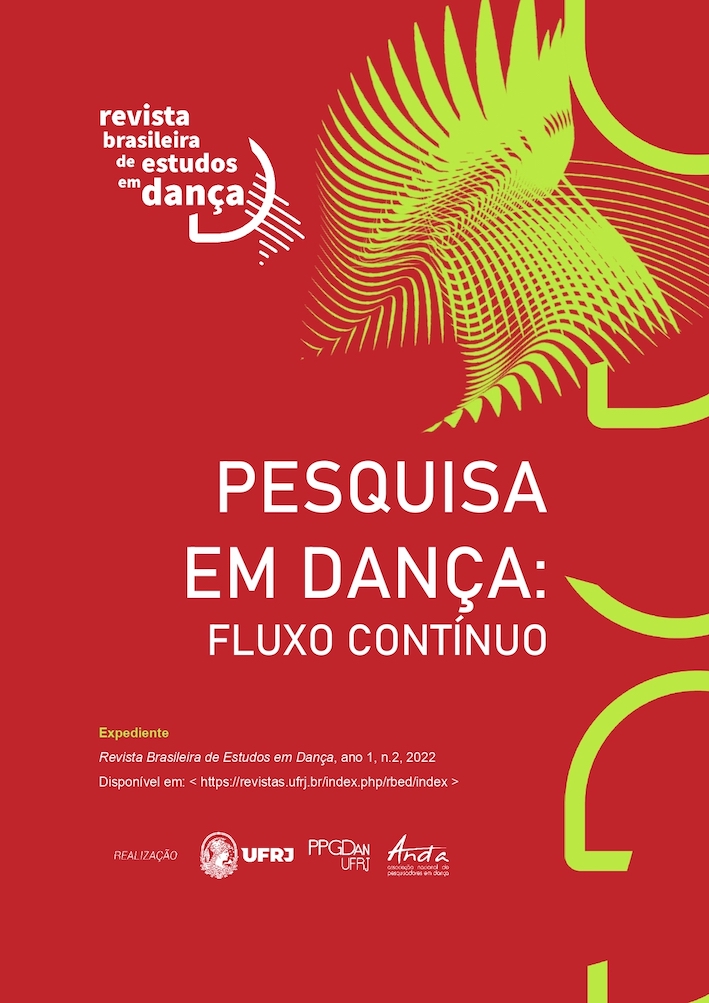The miudinho tap(s) of the sambadeiras from the Recôncavo da Bahia
DOI:
https://doi.org/10.58786/rbed.2022.v2.n2.55236Keywords:
Samba de mulheres, Samba de roda tradicional, Passo miudinho do samba de roda.Abstract
This article approaches the small step(s) traced by the women of the samba de roda of the Recôncavo Baiano, from research with 12 women sambadeiras from that region, intending to analyze the rhythms traced by the feet on the traditional samba circle, investi-gate the existence of a rhythmic cell typical to all of them. The epis-temological path was traced from the studies of ritual, scene, and performance (Schechner,1985; Turner,1986; Bião,1999) and the conceptual interactions made possible by ethnography. The meth-odological resources used were interviews; photographs; video re-cordings, and transcription of rhythmic cells for musical notation. The studies by Döring (2016), Amoroso (2017), and Domenici (2011) helped to understand the dynamics of samba circles. The research led me to the conclusion that there is a more recurrent rhythmic pattern among the sambadeiras. However, it is not the only one and undergoes several variations during the performance
Downloads
Published
Versions
- 2023-11-30 (2)
- 2022-12-30 (1)
How to Cite
Issue
Section
License
Authors who publish in the Revista Brasileira de Estudos em Dança are
responsible for the content of signed articles and retain copyright.
They grant the journal the right of first publication with the work simultaneously
licensed under the Creative Commons Attribution-NonCommercial 4.0 License
(Open Archives Initiative - OAI). This feature, used for open-access journals,
allows sharing work for non-commercial purposes and acknowledges
authorship. If the text is later published in another vehicle, the author
must inform that it was initially published as an article in the Revista Brasileira
de Estudos em Dança. Therefore, even if the journal owns the first publication,
authors are entitled to publish their work in institutional repositories or on
their personal pages, even if the editorial process has not been completed.
The journal reserves the right to make normative, orthographic, and grammatical changes to maintain the language standard, respecting the authorial style.

